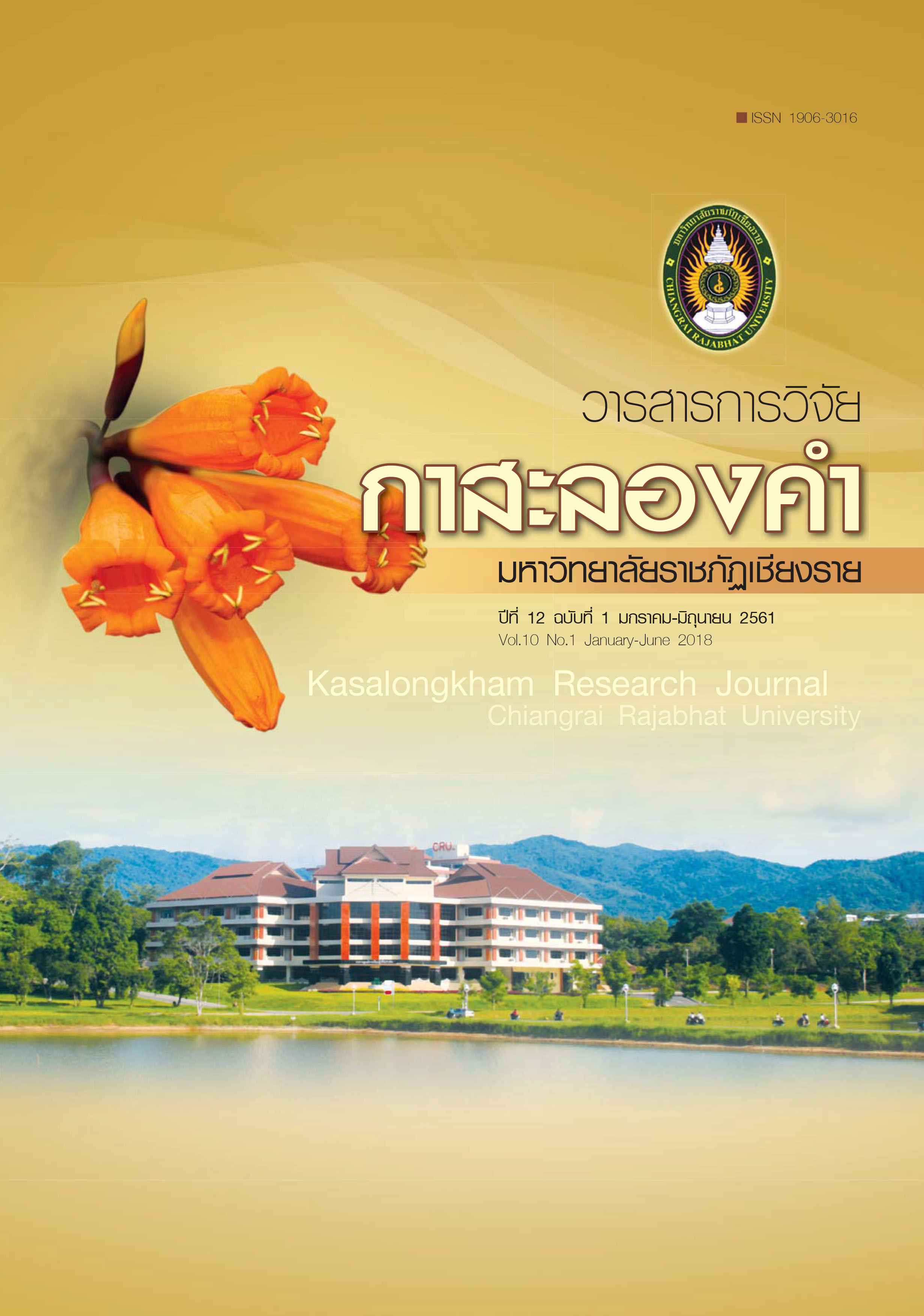Relationship Between Dividend Policy and Stock Price Volatility in the Stock Exchange of Thailand
Abstract
The objective of this study is to study the relationship between dividend policy and stock price volatility in The Stock Exchange of Thailand. The study tests the association of dividend policy and stock price volatility in 3 aspects which are 1.the level of dividend policy 2.the change in dividend policy and 3.the dividend policy in high dividend stocks. The sample of this study comprises of 1,289 observations from 336 listed companies in The Stock Exchange of Thailand during January 1, 2010 to December 31, 2014 Firms are excluded from the sample if they do not pay dividend at least once a year and are in the fi nancial sector. The estimation is based on multiple regression analysis with fi xed eff ect model. The test variables in this study are dividend yield and dividend payout while the control variable are fi rm size, earning volatility, long term debt and growth in asset. The results confi rm that dividend yield has a signifi cant negative relationship with stock price volatility while dividend payout has not signifi cant relationship. Earning volatility and fi rm size has signifi cant negative relationship with stock price volatility. Long term debt has signifi cant positive relationship with stock price volatility. On the other hand, growth in asset is not signifi cant. In additions the decrease in dividend yield has the signifi cant relationship with stock price volatility. Lastly, the study does not fi nd the evidence that the dividend policy has the relationship with stock price volatility in the high dividend stock.
References
กำไรของบริษัทที่จดทะเบียนในตลาดหลักทรัพย์แห่งประเทศไทย. (การค้นคว้าแบบอิสระบัญชี
มหาบัณฑิต มหาวิทยาลัยธรรมศาสตร์).
สุขใจ วิรุฬมาส. (2554). การตอบสนองของราคาหลักทรัพย์จากการประกาศจ่ายเงินปันผลของบริษัท
จดทะเบียนในตลาดหลักทรัพย์แห่งประเทศไทย. (การค้นคว้าแบบอิสระบริหารธุรกิจมหาบัณฑิต
มหาวิทยาลัยหอการค้าไทย).
Al-Malkawi, H. N. (2007). Determinants of Corporate Dividend Policy in Jordan: An Application
of the Tobit Model. Journal of Applied Accounting Research, 23, 44-70.
Allen, Dave E., & Rachim, S. V. (1996). Dividend policy and stock price volatility: Australian
evidence. Applied Financial Econnomics, Vol.6, Issue 2, pp. 175-188.
Baskin, J. (1989). Dividend Policy and the Volatility of Common Stocks. The Journal of Portfolio
Management, 15(3), 19-25.
Gordon, M. J. (1959). Dividends, Earnings and Stock Prices. Review of Economics and Statistics,
41, 99-105.
________. (1963). Optimal Investment and Financing Policy. The Journal of Finance, 18(2),
264-272.
Hussainey, Khaled, & Mgbame, Chijoke Oscar, & Chijoke-Mgbame, Aruoriwo M. (2010).
Dividend policy and share price volatility: UK evidence. Journal of Risk Finance, Vol. 12
Issue 1.
Kenyoru, N. D., & Kundu, S. A., & Kibiwott, L. P. (2013). Dividend Policy and Share Price
Volatility in Kenya. Research Journal of Finance and Accounting, 4(6), 115-120.
Lashgari, Z., & Ahmadi, M. (2014). The impact of Dividend Policy on stock price volatility in
the TEHRAN Stock Exchange. Journal of Business and Management, 3(10), 273-283.
Lee, B. S., & Mauck, N. (2016). Dividend initiation, increase and idiosyncratic volatility. Journal
of Corporate Finance, 1, 47-60.
Lintner J. (1962). Dividends, earnings, leverage, stock prices and supply of capital to corporations.
The Review of Economics and Statistics, 64, 243-269.
Miller, M. H. and Modigliani, F. (1961). Dividend policy, growth and the valuation of shares.
The Journal of Business, 34, 411-33.
Ramadan, Z. R. (2013). Dividend Policy and Price Volatility. Empirical Evidence from Jordan.
International Journal of Academic Research in Accounting, Vol. 3, No. 2, pp. 15-22.


 e-ISSN:
e-ISSN: 

